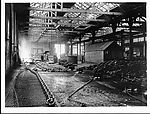 Lloyds Testing House
Lloyds Testing House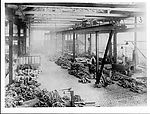 Lloyds Testing House
Lloyds Testing House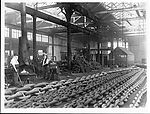 Lloyds Testing House
Lloyds Testing House 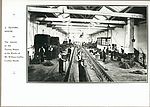 William Griffin Testing House
William Griffin Testing House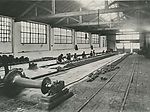 N. Hingley & Sons Test House
N. Hingley & Sons Test House

The safety of a ship's crew, and that of a valuable ship and its cargo, depended on the quality of the cable chain securing the ship to its anchor. It was realised very early in the history of the industry that the testing of cable chain was crucial to having confidence in the product.
Poor quality materials could cause a chain to break, which could lead to a shipwreck. Also, poor workmanship may lead to the failure of a weld, which could lead to the loss of life, goods, or even a battle.
It was not until 1846 that the Rules of Lloyds Shipping Register made it the duty of their surveyor to ensure that ship’s cables had been tested and stamped. However, standards of testing varied widely, so Lloyds set about drawing up standards for cable chain and its testing.
The first testing machines were made in London by Samual Brown in 1812 at his chainworks, and other large manufacturers such as Noah Hingley built their own proof houses. In 1864 the first testing house in the Black Country, to which any manufacturer could send their products, was set up by the Staffordshire Public Chain and Anchor Testing Company. Lloyds would not accept a certificate unless the proof house was open to an appointed inspector, or under the control of the Lloyds Register.
Further Acts followed in 1871 and 1874, which raised standards still further, and then in 1899 an Act brought about the establishment of the Lloyds British Testing Company. They checked that the testing of cables and anchors was to the satisfaction of the Lloyds Register of British and Foreign Shipping and helped the reputation of the British product abroad.
Chain was tested by using a steam engine to pull the chain very hard to see if it bent or broke. If it survived the test it would be stamped and a certificate issued. The Lloyds of Netherton Test House was the last proving house in the country to close down. This may have been because of its ability to test chain with up to 400 tonnes of breaking strain, more than any other proof house.
Rollover the captions in the box to see the available images in thumbnail format, click the caption to see the full-size image
| Reference: | 654 |
| Keywords: | |
| Archive Ref: | |
| Updated: | Thu 26 Apr 2007 - 1 |
| Interpretation written by | Louis Howe |
| Author's organisation | Curatorial |
| Organisation's website |